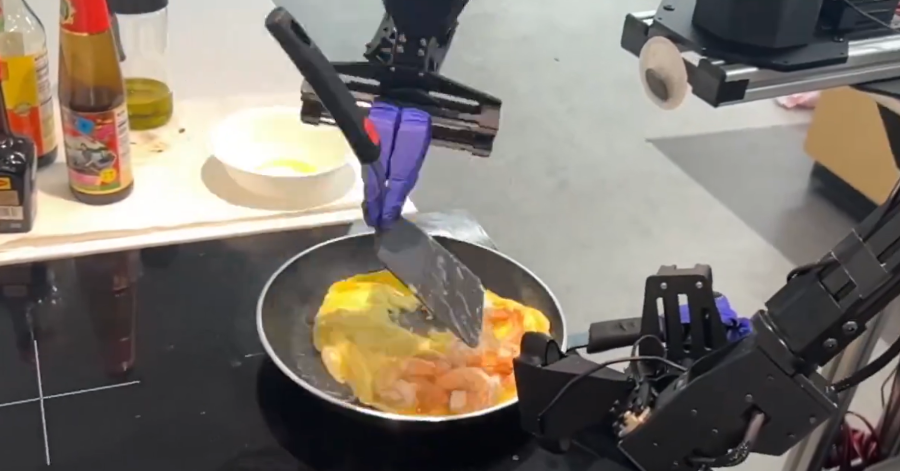Student researchers at Google’s DeepMind artificial intelligence (AI) lab have announced the Mobile ALOHA, a bimanual mobile manipulation system to carry out kitchen routines. Or in simpler terms, a robot cook.
Using a blend of robotics and AI imitation learning to complete tasks such as cooking, cleaning, and putting away chairs. The system learns from human behavioral patterns and carries out these instructions set by the human operator.
How does Mobile ALOHA work?
The system aims to focus on more dexterous tasks that robotics generally can’t achieve.
Mobile ALOHA hopes that when shown a task the bimanual robotic system will pick up the steps needed to complete it through the data collected by observing a human.
The team at Standford said of the data collected “with Mobile ALOHA, we then perform supervised behavior cloning and find that co-training with existing static ALOHA datasets boosts performance on mobile manipulation tasks.”
Project Co-Lead Tony Z. Zhao posted a video to X about the robot’s autonomous cooking displays:
Introducing 𝐌𝐨𝐛𝐢𝐥𝐞 𝐀𝐋𝐎𝐇𝐀🏄 — Hardware!
A low-cost, open-source, mobile manipulator.One of the most high-effort projects in my past 5yrs! Not possible without co-lead @zipengfu and @chelseabfinn.
At the end, what's better than cooking yourself a meal with the 🤖🧑🍳 pic.twitter.com/iNBIY1tkcB
— Tony Z. Zhao (@tonyzzhao) January 3, 2024
The team has also stated that with 50 demonstrations of a set task, the Mobile ALOHA can perform “sauteing and serving a piece of shrimp, opening a two-door wall cabinet to store heavy cooking pots, calling and entering an elevator, and lightly rinsing a used pan using a kitchen faucet.”
However, there are significant outtakes where the robotic bumbles, bashes, and gets the tasks wrong, but the display is impressive when the mechanical chef gets it right.
Although this is not exactly the sentient robot chef of the future this does show a significant development in robotic learning from instruction.
The impact of AI on human jobs is yet to be seen, but the current U.S. Administration has taken the first steps to draft AI governance and guidance.
The hope is to find a healthy balance to safeguard current jobs, but to also address the fact that “Artificial intelligence (AI) holds extraordinary potential for both promise and peril.” according to the White House.
One of the key anxieties surrounding AI is the replacement theory that robots will take over the roles of humans. After a recent demonstration of an ultra-realistic robot artist, a journalist was left unnerved by the responses and awareness of the painting automaton.
A robot also bested a human in a physical and mental challenge for the very first time thanks to the AI process of modular learning.
CyberRunnerAI is a robot that learns through progressively storing ‘memories’ of the mistakes and successes that have come before to adapt to real-world challenges.
Image Credit: Pexels.

















